Keywords
|
| Tentative cluster head, final cluster head, communication cost, network lifetime. |
INTRODUCTION
|
| A wireless sensor network comprises of a number of small devices called sensors, which are capable of detecting the environmental events, processing them and sending the data to the main location. The sensors are distributed or spread in the specific geographical area. The sensors are also known as nodes and the main location to which the data is sent is known as the sink or Base Station (BS). Each such sensor network node has typically several parts: a radio transceiver, for transmitting and receiving data, a microcontroller, for processing of data and an energy source, usually a battery. The battery makes these nodes critical in terms of energy efficiency. Due to limited life span of battery; the major issue in sensor networks is to save the energy. [1] |
RELATED WORK
|
| Routing means the way of selecting optimal paths in the networks. There are various routing protocols which are implemented for moving the data packets from source to destination in the wireless sensor networks. [2] |
| One of the major concepts used in routing in the networks is clustering. [3] The term clustering means grouping. The basic idea behind clustering is taking the data from various points and forwarding it further to its destination. The advantage of clustering is that it saves the data from travelling on long paths as well as only the useful data is sent forward, leaving the unimportant data. In wireless sensor networks, the node which collects data from different nodes is known as cluster head (CH). [4] |
| A routing protocol states how nodes communicate with each other, proclaiming information that enables them to select routes or paths between any two nodes in a wireless sensor network.[5]There are various routing protocols developed which focus on using the limited energy of sensor nodes in an efficient manner in a network. The main emphasis or goal is to use the energy of sensors in such a way that the whole network lifetime increases and the nodes die, due to lack of energy, as late as possible. One of such protocol is Hybrid Energy Efficient Distributed Clustering protocol [6]. As the name suggests, the word ‘hybrid’ means combination of two or more things or parameters and the protocol is based on the concept of clustering. Moreover, the concept is to distribute the energy consumption well in a network and producing well distributed cluster heads. |
ABOUT HEED
|
| Hybrid Energy Efficient Distributed Clustering (HEED) protocol works in iterations. [6] In the very beginning, some cluster heads are chosen on the basis of residual energy. The residual energy of a node is the remaining energy a node has at a particular time. The residual energy is the first parameter. The nodes with maximum residual energy are chosen as CHs. These CHs are known as tentative CHs. The number of nodes to be selected is limited by the cluster head probability, which is decided before the iterations start, depending upon the total number of nodes in the network. Now, every CH broadcasts about its existence in its cluster range. It is possible that a particular node gets message from more than one CH to get it joined into the group or cluster. Here comes the use of second parameter called the communication cost. This cost is used to break the ties between cluster heads. On the basis of this parameter, a node can decide which CH it should join, if it has more than one option. The communication cost may be computed or referred on the basis of different criteria. Here the cost taken is associated with the node degree. The node degree of a node is the number of nodes attached to a particular node. The lesser the number, lesser is the node degree. So, if a node has to select among two or more tentative CHs, is goes to the node with lesser node degree. [6,7] This leads to formation of final cluster heads in the network. After this, the communication takes place. |
NETWORK AND ENERGY CONSUMPTION MODEL
|
| The network and energy model followed in the simulation of the above said routing protocol is shown below in the Figure 2. [8,9] The transmitter portion at each node is used for sending the data further and consumes the ETX as transmitting energy as well as some energy in amplification. The cluster head compresses the data and forwards it to the destination node or base station, which also involves aggregation energy. Similarly, at the receiving end, ERX as reception energy, is used in accepting the data. |
PERFORMANCE EVALUATION
|
| All simulations have been implemented using MATLAB. The simulation parameters are given in Table1. The performance of the HEED protocol by varying number of nodes, network area and the base station position have been noted. |
| A. Simulation Parameters |
| The simulation tool used in implementing the HEED protocol is MATLAB i.e. Matrix Laboratory.[10] The various parameters taken in the protocol are given in the table below. |
| B. Simulation Results |
| The simulation results are taken on the basis of different parameters. The three major parameters taken are network area, base station position, number of nodes. We have studied the effect of changing these parameters on the network lifetime by analyzing the round number in which the first node of the network dies and the total number of nodes which die till the last round. Further, the maximum number of tentative cluster heads formed in the network in a particular simulation run has also been noted. |
| 1) Changing the network area |
| We have changed the network area as 100x100 and 200x200, keeping the number of nodes as 100 and BS at the centre of the network area. |
| In the network area of 100x100, the first node dies later as the distance between the nodes is less than that of the nodes spread in the network area of 200x200. |
| Similarly, the total number of nodes dead at the end of simulations is more in the case of network 200x200. But, the maximum number of tentative cluster heads remains almost same in both the cases as it has no effect by variation in network area. |
| 2) Changing the number of nodes in the network |
| The number of nodes deployed in the network area is varied from 50 to 250 by keeping the base station at centre i.e.BS (100,100) and network area as 200x200. |
| The number of nodes deployed in the network area is changed as 50, 100, 150, 200 and 250. |
| The observations made say that the round number when the first node dies is almost same in all the cases but the total number of nodes which die after the completion of simulations increases with the number of nodes and same is with the case of number of tentative cluster heads. |
| 3) Changing the Base Station position |
| The network area has been fixed at 200x200 as well as the number of nodes has been fixed to 100. The position of BS has been changed from centre of the network to the border of the network. |
| As we changed the location of the base station from centre i.e. BS(100,100) to that at the border of the network i.e. BS(100,200), it has been observed that there is no major difference in the values computed. |
| Thus, the effect of changing the network area, number of nodes and the position of base station has been observed. Firstly in terms of the network lifetime by two parameters i.e. the round number when the first node dies and the total number of dead nodes at the end of all the simulation rounds. Secondly, the maximum number of tentative cluster heads formed in the network in the given simulation rounds. |
CONCLUSION
|
| The paper shows the effect of various variations done in the parameters in the HEED protocol implemented for energy efficient routing in wireless sensor networks. In varying the network area, the lifetime of the network decreases, with the increase in the area, keeping the number of nodes constant, as the nodes die early due to increased distances among them. If we increase the number of nodes, keeping the network area unchanged, same pattern is observed. Lastly, on changing the location of the base station, there is only a slight change as the position has been changed only on y axis and that too with not much difference. The other observation made is in the maximum number of tentative cluster head formed in the network in any of the simulation round. Obviously, the number will increase if we increase the number of nodes; otherwise, it has no effect on it. |
Tables at a glance
|
 |
 |
 |
 |
| Table 1 |
Table 2 |
Table 3 |
Table 4 |
|
| |
Figures at a glance
|
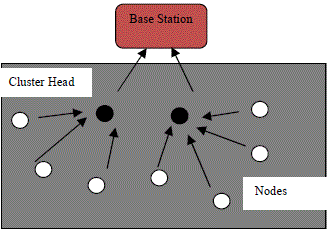 |
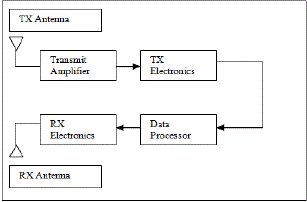 |
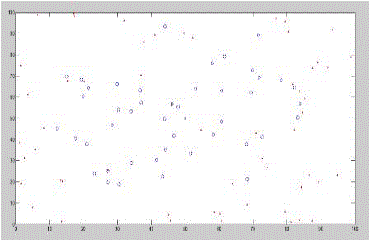 |
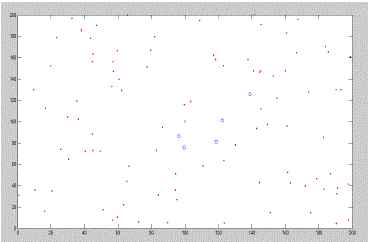 |
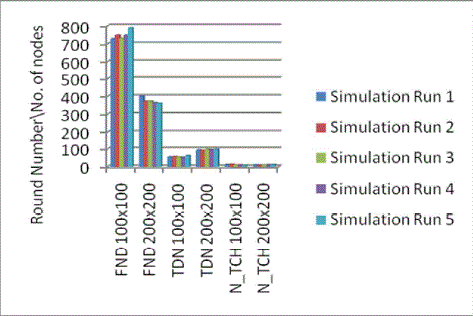 |
| Figure 1 |
Figure 2 |
Figure 3 |
Figure 4 |
Figure 5 |
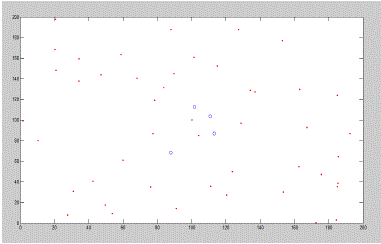 |
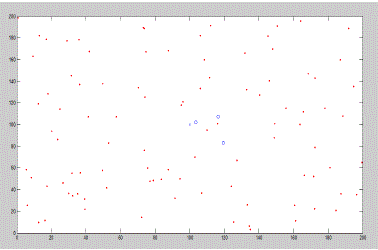 |
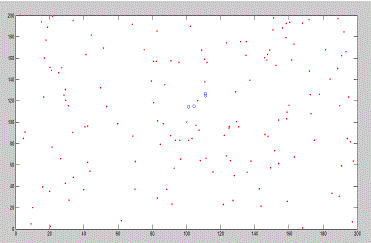 |
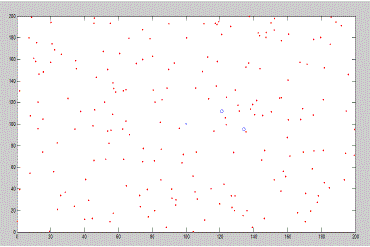 |
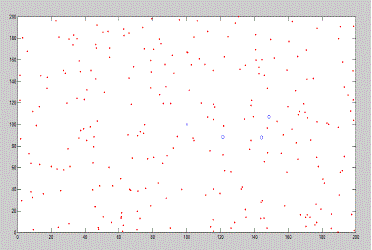 |
| Figure 6 |
Figure 7 |
Figure 8 |
Figure 9 |
Figure 10 |
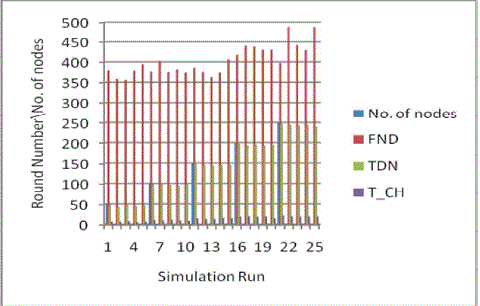 |
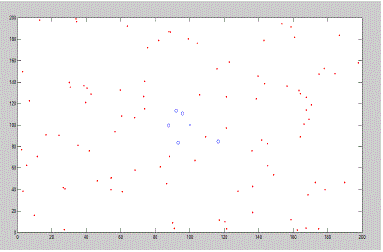 |
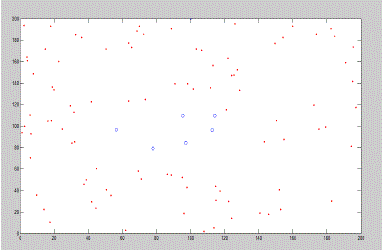 |
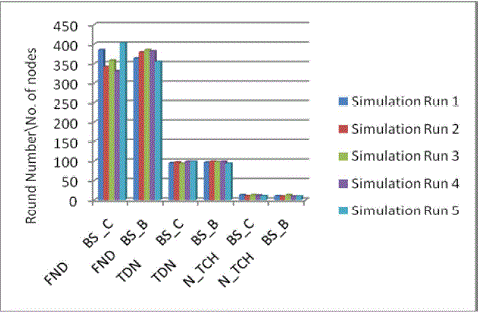 |
| Figure 11 |
Figure 12 |
Figure 13 |
Figure 14 |
|
| |
References
|
- Akyildiz, Ian F., et al. "Wireless sensor networks: a survey." Computer networks 38.4, pp 393-422, 2002.
- Al-Karaki, Jamal N., and Ahmed E. Kamal. "Routing techniques in wireless sensor networks: a survey." Wireless communications, IEEE 11.6 , pp 6-28, 2004.
- Liu, Xuxun. "A survey on clustering routing protocols in wireless sensor networks." Sensors 12.8, pp 11113-11153, 2012.
- Arboleda, Liliana MC, and Nidal Nasser. "Comparison of clustering algorithms and protocols for wireless sensor networks." Electrical and Computer Engineering, CCECE'06. Canadian Conference on. IEEE, 2006.
- Akkaya, Kemal, and Mohamed Younis. "A survey on routing protocols for wireless sensor networks." Ad hoc networks 3.3 , pp 325-349, 2005.
- Younis, Ossama, and Sonia Fahmy. "HEED: a hybrid, energy-efficient, distributed clustering approach for ad hoc sensor networks." Mobile Computing, IEEE Transactions 3.4, pp 366-379, 2004.
- Singh, Shio Kumar, M. P. Singh, and D. K. Singh. "Routing protocols in wireless sensor networks–A survey." International Journal of Computer Science & Engineering Survey (IJCSES) Vol 1, pp 63-83, 2010.
- Muruganathan, Siva D., et al. "A centralized energy-efficient routing protocol for wireless sensor networks." Communications Magazine, IEEE 43.3 , pp S8-13, 2005.
- Heinzelman, Wendi Rabiner, Anantha Chandrakasan, and Hari Balakrishnan. "Energy-efficient communication protocol for wireless microsensor networks."System Sciences, proceedings of the 33rd Annual Hawaii International Conference on. IEEE, 2000.
- Guide, MATLAB User’S. "The mathworks." Inc., Natick, MA 5, 1998.
|